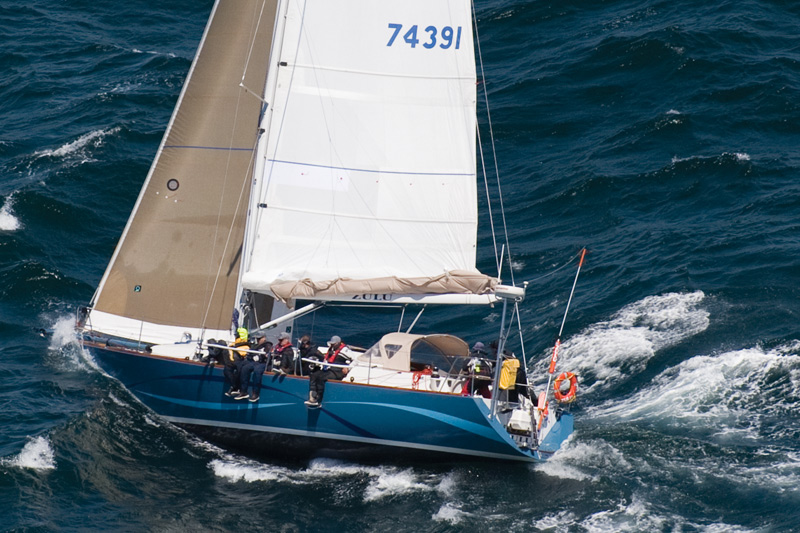
Photos: Dave Woodcock and Jan Anderson
one of the toughest sails on the West Coast.
Veteran Brad Baker takes us inside the experience.
 Brad Baker looks slightly out of place in the newly opened Scandinavian-chic café in Ballard where we meet. Wearing faded jeans, a nondescript t-shirt, and a well-loved Swiftsure Yachts baseball cap, he peruses his laptop for weather reports from a couch in the back. The crowd around him consists of well-dressed techies with dates at the bar or work-from-home types on their Macbooks.
Brad Baker looks slightly out of place in the newly opened Scandinavian-chic café in Ballard where we meet. Wearing faded jeans, a nondescript t-shirt, and a well-loved Swiftsure Yachts baseball cap, he peruses his laptop for weather reports from a couch in the back. The crowd around him consists of well-dressed techies with dates at the bar or work-from-home types on their Macbooks.
“Your coffee is on me,” Baker says as we get comfortable and I brace myself for tales from a true bona fide sailor. We exchange a handshake, and it isn’t more than a few seconds before we dig into his favorite topic: the Vic-Maui International Yacht Race. Baker is The Professor when it comes to the Vic-Maui Race, an epic biennial yacht race across the Pacific that spans between the Royal Vancouver Yacht Club in Victoria, British Columbia and the Lahaina Yacht Club on Maui, Hawaii, the two co-host organizations. The race, which celebrated its 50th birthday in 2016, is a Pacific Northwest icon that has it all. The Victoria start line boasts the decidedly British-Navy blazers of the Royal Vancouver Yacht Club and the Pacific Northwest’s evergreen studded mountains, while the battle across half of the Pacific to Maui ends with flip-flops and rainbows that arch over palm trees and white sand beaches. The race attracts both hotshot pros on true racing sleds as well as those who just want to make it to the other side.
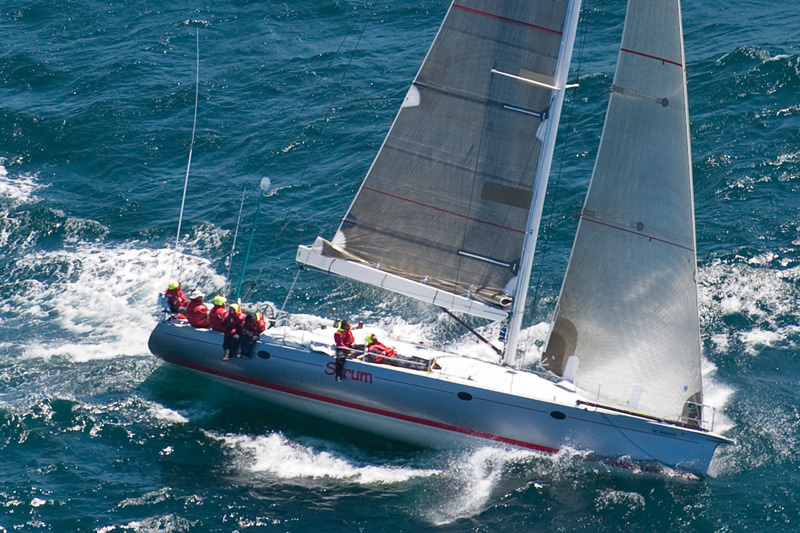
As a nine-time Vic-Maui veteran, Baker definitely has some salt cred to hang his hat on. He currently works as a mentor with the race to teach newcomers safety at sea and weather routing for the upcoming 2018 race. Baker has given countless talks, including one at the last Seattle Boat Show, and his blog posts remain some of the best and most widely shared Vic-Maui resources for those following the race. But what is it about Vic-Maui that keeps bringing him, and many other Pacific Northwest racers, back?
“Vic-Maui is a great race,’’ says Baker without hesitation. “As a navigator, I like the race because it’s much more complex than a race from L.A. or San Francisco to Hawaii. Vic-Maui is more of a navigator’s race, and we can have a huge impact. Also, it’s convenient for those who live up here. Why do a passage down south to do something like this? Additionally, it’s easier to get back to the Pacific Northwest from Hawaii than back to California. It’s a much more pleasant trip and only around 200 nautical miles longer.”
Baker has been the navigator in seven of his nine Vic-Maui races, and his evolution into the important role still has him scratching his head.
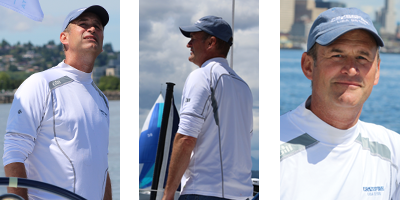
“I don’t know how it happened, but now I’m considered a weather person. I’m pretty much self-taught. I’ve routed people all over the place and I don’t charge anybody, so I always preface it with you get what you pay for,” he jokes, underplaying the value of his free services and his reputation. “For my first two Vic-Maui races, I was just a young guy having a good time!”
the Eighties
Baker’s first Vic-Maui race was in 1984 aboard Hypertension, a Baltic 42. He was 19 and ended up on the crew roster through connections and with a little luck.
“It was that first race when I discovered that I can, in fact, get seasick,” Baker chuckles. “There’s lots of stories. There used to be this boat called Ajax, a Santa Cruz 40. Those guys knew how to have fun, everyone knew Ajax. In ‘86, they had a blow-up doll named Olga who had raced across with them in ‘84. Well, in ‘86 they tied Olga up to the spreaders. I don’t know if they know this, but I’m the one who shimmied up the mast in the night to kidnap Olga. We actually sailed with Olga on Hypertension to Hawaii.”
The Olga drama unfolded as the racers tore across the Pacific. Baker puts a fake mike to his mouth in the retelling. “Once on roll call, Ajax’s skipper gets on the radio and then adds, ‘Where’s Olgaaaa?!?’ My skipper, Roger Palmer, reported, ‘Olga’s position is…’ and gave the position of our boat. Well, Ajax got in ahead of us and convinced the customs folks in Maui to help them get Olga back. The customs guy came out with his list of people and the ninth was Olga. They confiscated Olga right on the spot when we finished.”
Baker can’t say enough about how great the cooperation is between the Lahaina Yacht Club and the Royal Vancouver Yacht Club. “When you get to Lahaina, the yacht club arranges sponsors from the local community, usually restaurants, and every boat get this big spread of food and drinks. Everybody also gets lei’ed (the traditional flower necklace). The boat even gets a lei!”
Of course, Vic-Maui is not all fun and games. As Baker’s racing career matured over the decades, he ended up on high-performing race crews. Baker grew into the navigator role, a position in modern racing that has less to do with location (that’s what GPS is for) and more about developing a winning strategy. To that end, Baker offers many tips for the aspiring Vic-Maui finishers and class winners from his years of experience.
Weather Nerd
Tip #1 – Know the tools at your disposal. Modern technology offers racers and ambitious weather nerds many opportunities to get ahead. “Everybody uses Expedition software. It is expensive, though,” according to Baker. “I’m self taught and it’s all about going to seminars, talking to experienced racers, and being proactive.”
Tip #2 – Although you cannot use a third-party weather router during the race, you can use professional input up until the starting gun. “Lots of the very prepared guys do that,” says Baker. A popular choice is Commander’s Weather, an East Coast company.
Tip #3 – Test one’s communication systems to make sure the boat can stay in the know, download publically available GRIB files, and the like. “Don’t let the boat owner install that single sideband or test out that Iridium satellite phone the day before the race,” advises Baker.
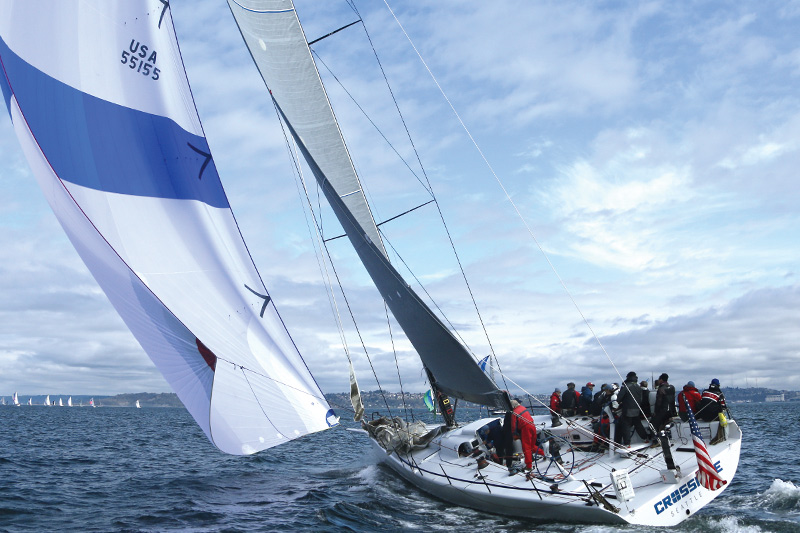
“You can’t win by preparing alone, but you can lose by not preparing,” says Baker.
Tip #1 – At least one boat always has steering problems. Head that off and be ready to fix and replace steering cables, bearings, and rudders.
Tip #2 – Never underestimate the destructive power of chafe on anything under load or moving, like halyards, sheets, and guys. “I tell everyone to use straight up Spectra core material for the stretches of line that go around corners. Six feet of the material usually does the trick.”
Tip #3 – Charging and electrical systems as a whole are often less on the mind of racers, but spare alternators, voltage regulators, and knowing how to troubleshoot engine starters is vital for long-range races like Vic-Maui. Baker recommends the classic Boatowner’s Mechanical and Electrical Manual by Nigel Calder.
Shipmates
“They’re better than rock star sailors,” says Baker. As far as crew selection is concerned, Baker is a big advocate for good shipmates being more important than jaw-dropping sailing resumes.
At the end of the day, the typical crew will be trapped together on a boat for around two weeks. They simply have to get along.
“The race can bring out the poor traits in some and you really want to vet the crew. Good shipmates do 110%, keep their area clean, and not only do what they’re told but ask how fast. There are plenty of great guys in the race who are not necessarily the best sailors, but they are rock solid. Crew need to be good shipmates, and it’s a bonus if they are rock star sailors.
with Quease
“Everybody gets sick at some point. The key is to manage it,” says Baker.
Tip #1 – Everybody is different and you need to know about what works for you and how your body responds to different situations.
Tip #2 – Try to keep something in your belly. “I am constantly snacking aboard,” says Baker.
Tip #3 – Gravol. Baker recommends and uses this Canadian version of Dramamine (labeled Gravol in stores). “It works best for me. It does still make you sleepy, put I pop one and usually feel better in half an hour.”
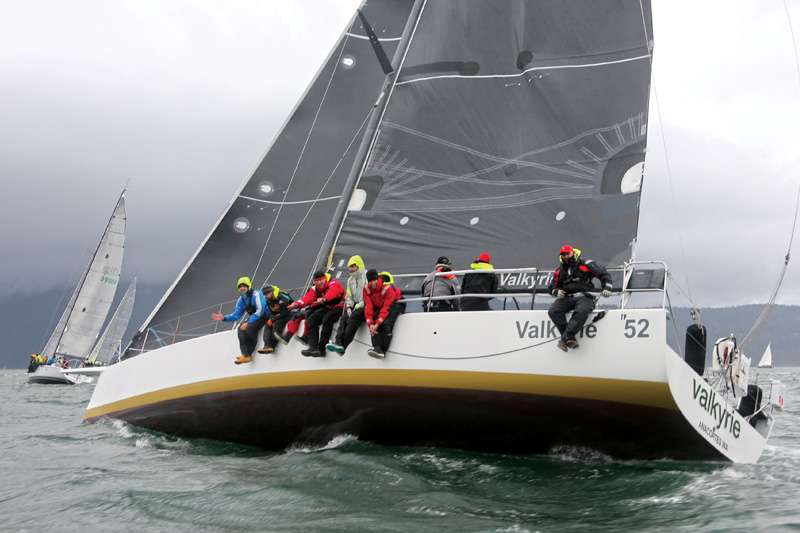
The last Vic-Maui race in 2016 saw both the elapsed and correct time records broken by a sizeable margin. Skipper Gavin Brackett drove his Transpac 52 Valkyrie across the finish in eight days, nine hours, 17 minutes, and 50 seconds to destroy the previous elapsed time record of Grand Illusion (a Santa Cruz 70) in 2000 by over a day. Baker predicted that the 2000 record wasn’t going to hold on his blog before it happened.
“I knew the 2016 record was going to happen because I was paying attention to the weather. After the second of three starts and the weather set up, I said on the blog the record is going to be broken. And I was right, wahoo! We had a solid high-pressure block that set up. The high is usually somewhere between 1027 and 1035 millibars, generally, if the system is even set up at all. In 2016, the high was setup to 1040 millibars and farther north and west than normal. That produced a solid wind field from the Washington coast to Hawaii with winds ranging from 15 to 30 knots all the way for a constant downwind breeze.”
An important element to understanding Vic-Maui is the nature of the Pacific Northwest summer. “Have you ever heard the meteorologist joke that Seattle summers don’t start until July 12? It’s usually true because that’s when precipitation really takes a dive around here. You are pretty much guaranteed to have nice weather after July 12 because it’s the change between the winter/spring pattern and into the summer pattern. So if Vic-Maui starts at the end of June or early July, you still might be in the winter/spring weather pattern with stormy weather.”
Baker was also able to make his bold, but accurate, prediction thanks to inter-model weather forecast agreement. “If several weather models agree on the same solution, we have ‘high confidence’ in weather-prediction lingo. The sleds had a wild ride. A good ride!”
To set a record, the right boats also had to be on the course, and in 2016 there were a few of them. “There were four boats that could’ve done it. Crossfire was one of them, but heartbreakingly, they had to turn around at the beginning of the race. They had a 60-nautical-mile lead too,” says Baker.
The next Vic-Maui starts June 30 – July 4, 2018, and entries recently opened on June 15, 2017. Despite all the buzz and predictions flying around, Baker is insistent that the next Vic-Maui in 2018 is too far off to say much about. Now that we are about a year away from the 2018 race, Baker says he would be preparing the crew’s spreadsheet of tasks to delegate, an assignment of epic proportions if he was participating.
“A lot of weather guys try to speak with confidence about weather predications for 2018 and try to cite some El Niño thing or whatever, but who really knows. Based on my experience, I know that at about a year out is when you really start thinking about it. At this stage there’s a lot of planning that’s happening, but perhaps not necessarily a lot of work on the boats yet.”
Although he is not planning to participant in 2018, his eyes light up when talking about the next race. I imagine that the gleam in his eye is the same as when he was a 20-year-old crewmember climbing the spreaders of Ajax to kidnap Olga. Baker strokes his chin reflectively.
“When you finish a race like Vic-Maui, there’s actually a big let-down. You accomplish this huge adventure and then you get in a slump thinking, ‘Well, what next? Go to Disneyland?’ You just conquered the Pacific, and that’s life changing for people. It certainly was for me.”


